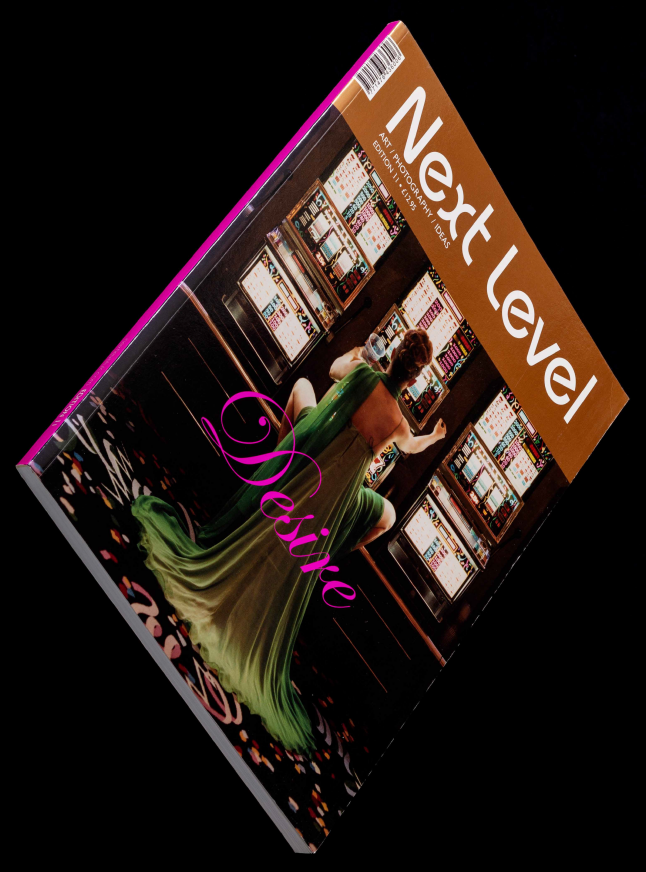Laura MedlerPerformance

As an undergraduate student at the Slade School of Fine Art, Laura Medler embarked on a work that, in retrospect, can be seen to have influenced everything which followed. She made a series of self-portraits using the British Museum’s periphery camera. Rotating on a turntable in front of the lens, she moved through 360º at exactly the same pace that a film progressed through the camera on a long exposure, resulting in a panoramic image of the entire exterior surface of her head (skin and hair coated completely in silver, rendering her with the appearance of a science-fictional death-mask). Wanting to extend the field of view to encompass and to record a complete body in a diversity of locations, she built or adjusted her own cameras with the similar facility for exposing a complete film in a single, long exposure. This method lacked the perfect synchronisation of the periphery camera, but it was precisely the lack of absolute correspondence between the rotation of the subject (frequently herself) and the movement of the film that produced an extraordinary and surreal stretching and fragmentation of the body.
The performative behaviour of both camera and subject gave rise to a series of works centred on particular bodily actions. Performance (2003) is still very much concerned with portraiture, both as self-image (a drawing) and as the self viewed (a photograph). The artist, unclothed in front of a black backdrop, draws around the outline of her body with a piece of white chalk, successively crouching, leaning, bending, turning and stretching to reach her extremities, passing the chalk from one hand to the other, before finally bending forward again, then returning to an upright position and leaving before the film runs out, so that the final images are of the drawing alone. On this occasion, the animated subject moves only within the confines of a fixed position while the film relentlessly progresses through the camera, which in turn moves continuously back and forth on its tripod in a series of panning sweeps. This complex of pauses and movements registers the body as a repeating frieze of seventy distinct renditions in a developing continuum, similar in appearance to a Muybridge sequence of human locomotion, but with both figure and drawing anamorphically compressed by the lateral actions of film and tripod.
Clearly, this is a model of reflexivity, a lucid study in the relation of film to camera to subject, and a comparison of drawing, photography and animation. Equally clearly, this objectively scientific method has other consequences – the production of an image now susceptible to more subjective responses. If, for example, we consider this to be a ‘desirable’ image, the locus of desire seems to be within four possible sites: the artist herself as subject; the operator of the camera; the viewer of the photograph; and the photograph itself as viewed object.
Additional to her imperative of making one continuous image (a drawing) to be simultaneously configured within another (an extended photographic transparency), there is the artist’s wish to repress a single identity in favour of multiple identities, creating a frieze that is repetitious without ever literally repeating itself. Indeed, she sees the performed action more as annihilation than celebration of a singular self, and the white chalk drawing that remains is like the evidence of a body’s trace in a crime scene. A temptation to see the naked artist’s self-attention as an auto-erotic experience seems undermined by such negative description, and one may have to look elsewhere to find her displayed body as an object of desire.
In this case, the next consideration might be the perception of the unseen and unknown camera operator, but one can only speculate on the psychological effect of such a gaze on its donor. Our own indirect gaze towards the ensuing representation is a more reliable reference. The nude figure will always be potentially erotic, and here a slender, youthful female body is in conformity with a convention familiar to us in paintings, photographs and films, and must surely qualify to trigger such potential. Moreover, given that the back-and-fourth panning of the camera frequently creates pairs of figures within the larger frieze, a resulting narrative suggestion only compounds an erotic reading by supplying a context. For example, the detail selected for the invitation card to Laura Medler’s recent exhibitions at Capital Culture in London, and Outline in Amsterdam, comprises two elongated women standing side by side, laterally inverted like mirrored twins, each with one arm raised, stretching and revealing the upper part of the body, each with the other arm hanging down and seemingly linked as though they are handcuffed together. Both gestures, in combination with their nudity, only serve to render the pair as passive recipients of our gaze, but the combined look of both figures directly outwards to the observer defiantly contradicts that passivity, their resulting ambivalence producing an almost sado-masochistic construct.
The final locus of desire is in the art object itself, the image embedded in the medium which transports it. Most usually with Laura Medler’s work, a Cibachrome transparency is displayed on a light-box, offering the viewer a shiningly seductive consumable. Equally enticing, however, Performance is resolved as a sleekly panoramic (14 x 300 cm) Cibachrome print, face-mounted behind clear acrylic (using the Diasec process), backed with aluminium. The hi-tech production values and pristinely manufactured materials combine with the more uniquely configured and painterly nudes (patterned with lateral striations resulting from the film’s imperfect progression) in an irresistible mix. This is, in fact, the final, potent meeting point of three desires (towards the subject, towards the image, and towards the object), which now reside there in delectable fusion.
